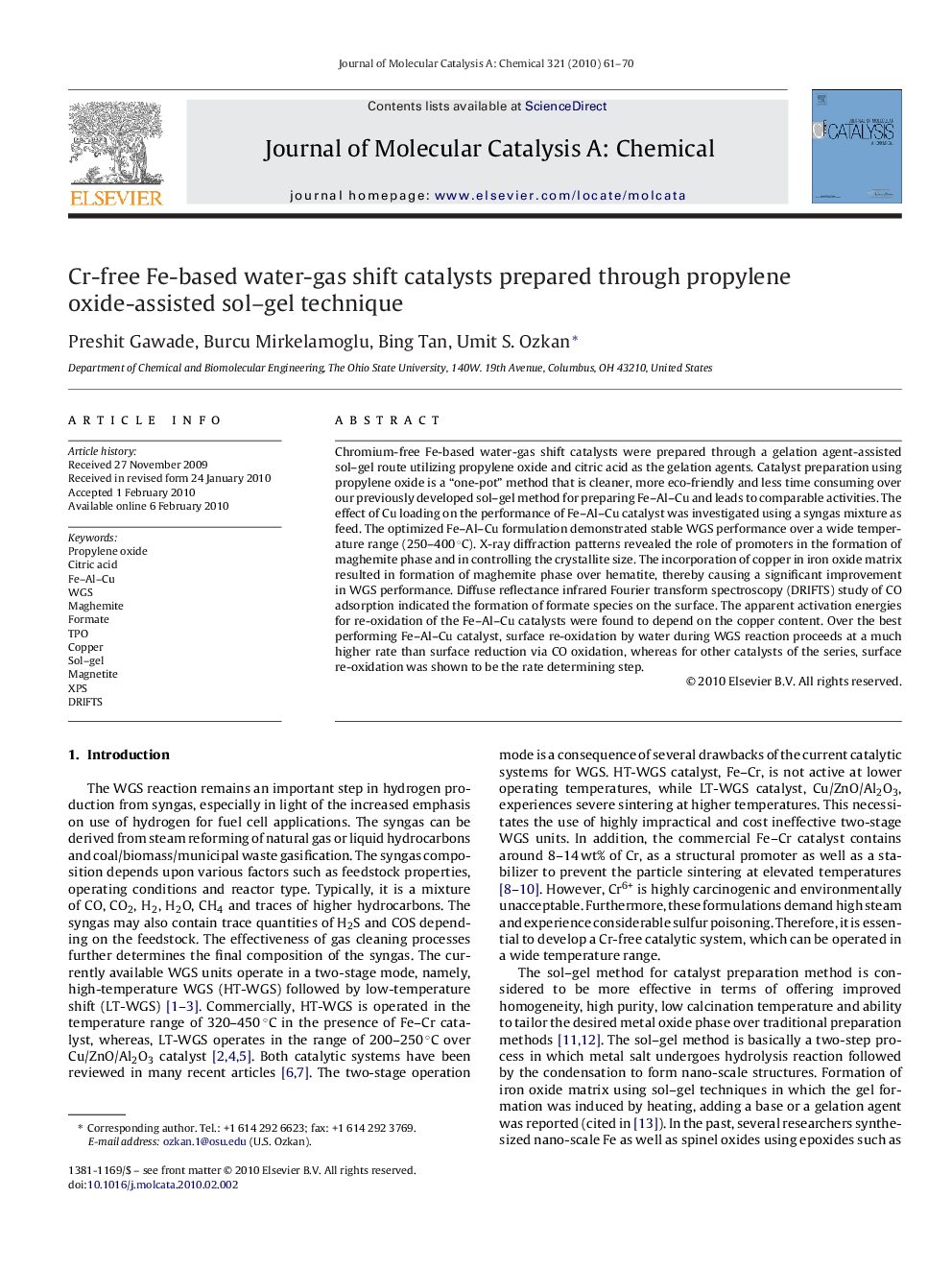| Article ID | Journal | Published Year | Pages | File Type |
|---|---|---|---|---|
| 66788 | Journal of Molecular Catalysis A: Chemical | 2010 | 10 Pages |
Chromium-free Fe-based water-gas shift catalysts were prepared through a gelation agent-assisted sol–gel route utilizing propylene oxide and citric acid as the gelation agents. Catalyst preparation using propylene oxide is a “one-pot” method that is cleaner, more eco-friendly and less time consuming over our previously developed sol–gel method for preparing Fe–Al–Cu and leads to comparable activities. The effect of Cu loading on the performance of Fe–Al–Cu catalyst was investigated using a syngas mixture as feed. The optimized Fe–Al–Cu formulation demonstrated stable WGS performance over a wide temperature range (250–400 °C). X-ray diffraction patterns revealed the role of promoters in the formation of maghemite phase and in controlling the crystallite size. The incorporation of copper in iron oxide matrix resulted in formation of maghemite phase over hematite, thereby causing a significant improvement in WGS performance. Diffuse reflectance infrared Fourier transform spectroscopy (DRIFTS) study of CO adsorption indicated the formation of formate species on the surface. The apparent activation energies for re-oxidation of the Fe–Al–Cu catalysts were found to depend on the copper content. Over the best performing Fe–Al–Cu catalyst, surface re-oxidation by water during WGS reaction proceeds at a much higher rate than surface reduction via CO oxidation, whereas for other catalysts of the series, surface re-oxidation was shown to be the rate determining step.
Graphical abstractCu loading in Fe–Al–Cu catalysts prepared with propylene oxide-assisted sol–gel technique may change the rate determining step in the redox mechanism.XRD shows changes in crystal phases with Cu loading.Figure optionsDownload full-size imageDownload high-quality image (166 K)Download as PowerPoint slide
